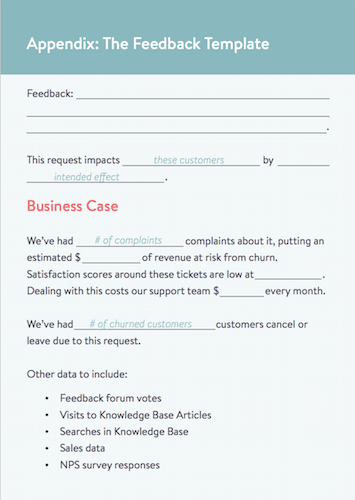Support: the product manager’s secret weapon

As a product manager, you want to build products that people want to buy and that customers love. But when was the last time you actually heard from your customers about what they like or dislike about your product? How often do you consider customer feedback when you’re planning product updates?
For many product managers, the main channel to customers is through the sales team. Sales teams know which features sales are won on and which they’re lost on. Sales knows what features prospects are asking for and can place a direct monetary value on implementing such a feature request. But sales people listen to sell; they don’t always listen to learn.
Basing your product roadmap on ad-hoc promises made to win a sale is a sure-fire way to lose sight of your vision for the product, and doesn’t actually address the needs of your end users.
Wish you understood your customers better?
Of course, you want more than anything to meet the needs of your customers but you don’t have the opportunity to talk to your customers as much as you wish you could. Consultants suggest it’s best to ask customers for feedback face-to-face, which is not only time consuming but also very difficult to schedule when your customers are have about as much free time as you do (i.e., none).
When you want to set up a quick call with customers, your sales teams get their backs up about being left out of the loop and demand to be involved in all discussions, making it more of a headache than a productive use of your time.
So it’s not surprising that you just go on what you read about market trends, the requests from your sales teams, and what you think customers want.
However, there is actually an easy way to get in touch with your customers and find out what they actually need, and what is going to make them stay being your customer and loving your product:
Talk to your support team.
A goldmine of customer feedback
You’re probably used to hearing from your support team that customers are struggling with certain features and are asking for a change to be made to some part of the platform. You’re right in thinking that you can’t address all these minor changes just for the sake of one client - if you did, your product updates would take years and you’d never get to implement any of the cool ideas you’ve been planning forever.
The veritable stack of support tickets requesting changes and new features is too overwhelming to even consider looking at when you’re thinking about what to add to the platform, you simply don’t have the time to look through them all and see which requests come up often enough to be viable.
But support does.
Support teams literally spend all day talking to customers, responding to customers’ requests for help, and doing all they can to make them happy.
Support teams understand the issues that customers have and can see the patterns in support tickets and recurring feature requests that come in. They understand why customers are asking for these requests and can see how much one change, if implemented, could help so many existing customers.
How can you leverage the expertise in customer support?
You’re not the only one who has overlooked this valuable feedback channel; according to Uservoice, only 14% of product managers have a process for getting feedback from sales and support.
Your support team is basically a direct line to your customers, and the line should be open as often as possible. Support should act as a filter for the feedback that customers give, only passing on the most valuable or most frequently heard requests. Regular communication with your support team will ensure that you gain insight into these requests but won’t be overwhelmed by a volume of complaints or ideas.
While product teams are often guilty of ignoring the feedback from support, support teams can do a better job of delivering this feedback to product managers. By framing feedback in terms of use cases, product managers will be able to understand more clearly how this feedback fits into how the product is used or could be used in the future (perhaps with some changes or additions).

Encourage support teams to make a data-backed business case for each customer feature request they put forward. It may be helpful to provide support teams with an easy feedback template, like this one, which they can fill out with the customer’s feedback, which makes the business case clear.
Having the information laid out clearly in a template like this, you can quickly see if a suggestion is worth implementing and get an idea of what the value of making that change might be.
Get your support teams to use data and examples to demonstrate things like: the number of complaints about a given feature; how much this is costing in terms of the support team’s time; how many customers have cancelled due to the request; how many customers have searched the knowledge base for a certain feature; how having the feature aligns with the company’s values; and how competitors are approaching the issue.
Keep the communication lines open
As a product manager, you spend a huge amount of time thinking about what your customers might like from your product and coming up with new ideas for what to add or improve to attract more customers. But the best way to know what your customers want is to speak to them. As a product team, you may be far removed from your customers, but you needn’t be far removed from your support team.
Support is the direct line to your customers and they are perfect for distilling the large volumes of feedback and feature requests that customers suggest every day. If you and your support team maintain lines of communication for the most frequently requested and high-value customer feedback, you will have insight into your customers’ needs and will be able to shape the direction of your product in the knowledge that your customers will be happy and loyal.

